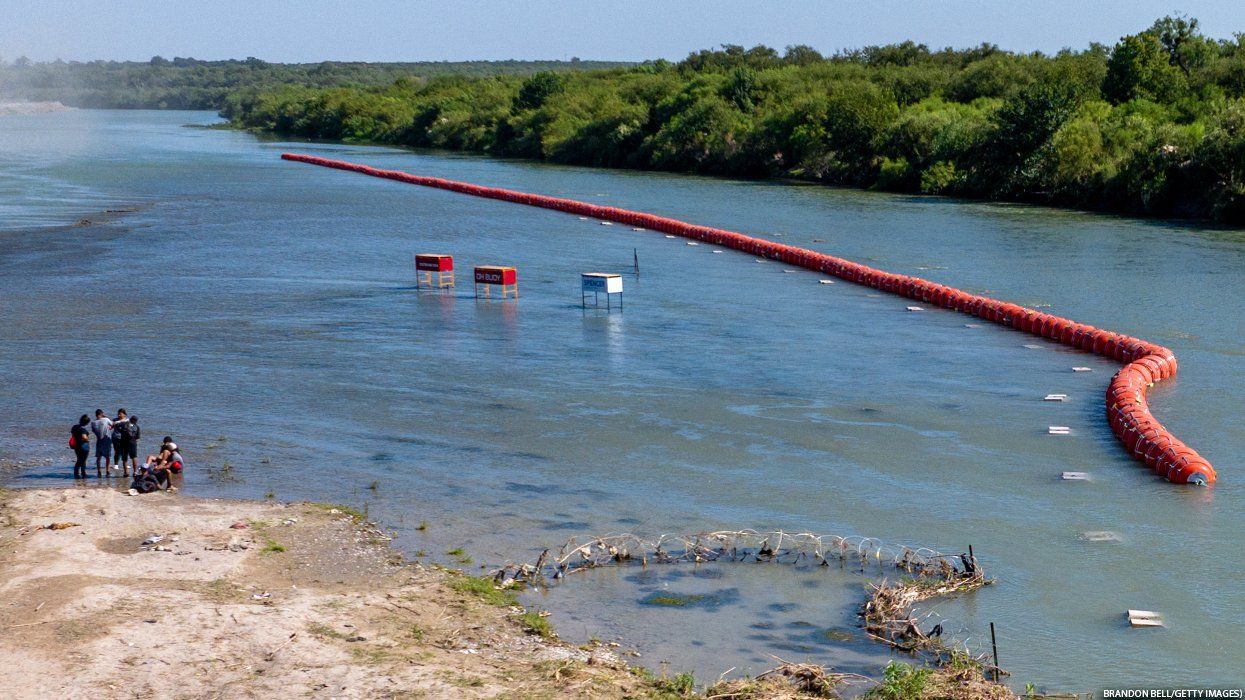To deter migrants from crossing the Rio Grande, Texas constructed a string of massive buoys along a stretch of the river in Eagle Pass.
The U.S. Department of Justice (DOJ) has issued demands to Texas Governor Greg Abbott: remove the construction, or face legal action. The floating barrier, a directive of "Operation Lone Star," has raised legal, humanitarian, and environmental concerns with the DOJ.
Biden Administration warns of a lawsuit against Texas

Gov. Abbott claimed that the latest measures at the border aim to protect the safety of those attempting to cross the river, but Texas state trooper Nicholas Wingate described conditions there as "inhumane," according to Hearst Newspapers. Wingate's scathing email to his superior described measures that border patrol officers have taken to push migrants back into Mexico.
From his accounts, parents and children have been trapped and bloodied in the razor wire that lines the borders. One teenager avoided the water by crossing through the river, but broke his right leg as he struggled in the dangerous currents. And officers have been prohibited from giving water to migrants, even in sweltering summer heat.
Outlining their demands, the DOJ pressed Abbott to remove the floating barrier, criticizing its unlawful construction — The Rivers and Harbors Act prohibits unauthorized structures that block navigable waters. DOJ officials argued that Texas did not seek authorization before installing the barrier, nor was permission ever granted to the state.
Additionally, the International Boundary and Water Commission (IBWC), a joint agreement between the U.S. and Mexico, established that construction cannot inhibit the flow of the Rio Grande River. As the IBWC established, the U.S. does not possess sole jurisdiction of the river, which may inhibit the efficacy of the project.
In the past few years, environmental concerns about border construction have also been reported to U.S. Customs and Border Protection. Obstructions along the U.S.-Mexico border may disrupt migration and reproductive patterns of wildlife in the Rio Grande ecosystem, or lead to devastating loss of life during floods. Regarding the latest installation, experts warn that the netting below the buoys may trap marine wildlife.
"We already have such a decline in many fish species, and it’s really sad," environmentalist Tricia Cortez told Border Report. "And to think that this is going to deter migration is pretty wild at a cost of $1 million dollars for 1,000 feet. That’s just kind of outrageous."
- Donald Trump's Border Wall Found Unlawful, Money Returned to States ›
- Texas Floating Border Sparks Legal Action ›
- Justice Department Sues Texas Over Floating Border Barrier ›
- Republican Law Stripping Power From Cities in Texas Blocked by Judge ›
- DOJ Sues eBay For Selling Products That Harm Health and the Environment ›
- High-Speed Chases at Southern Border Are Killing Immigrants ›

















































